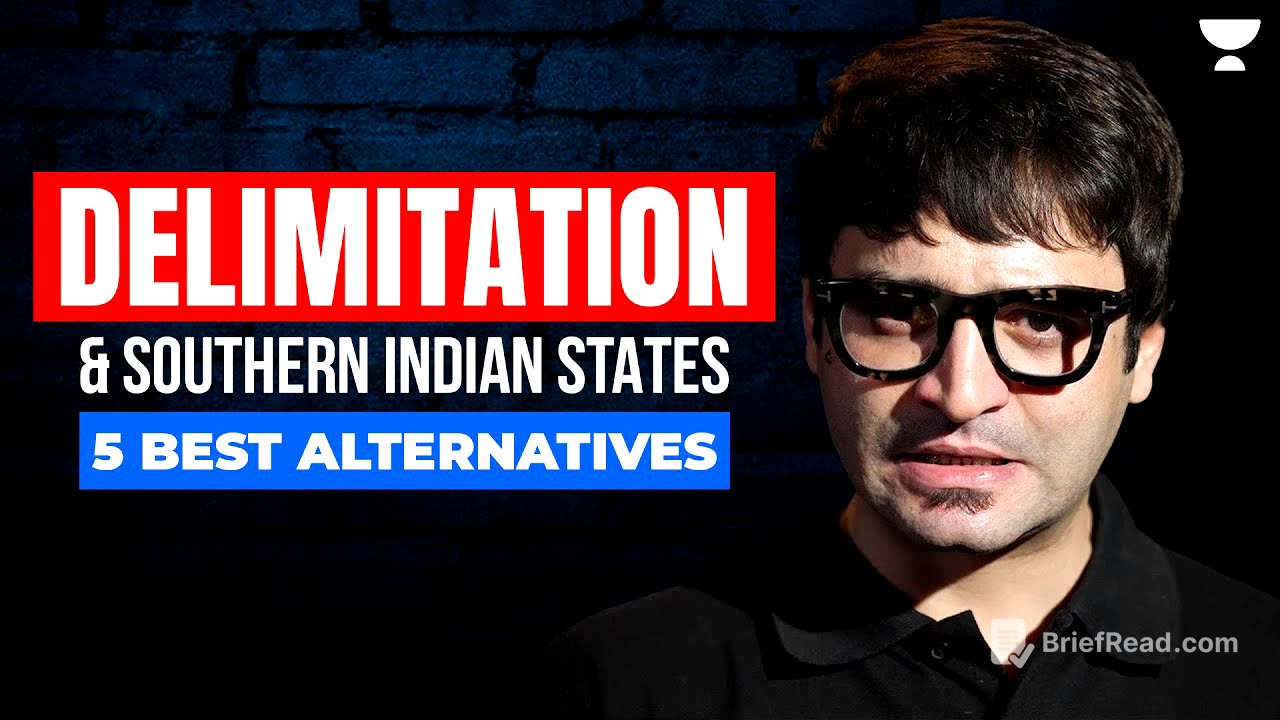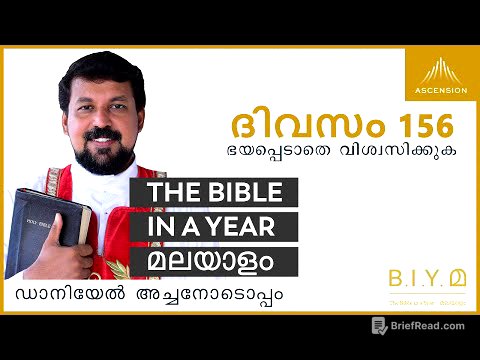TLDR;
This video discusses the complexities surrounding the upcoming census in India and the potential delimitation exercise that could follow. It highlights the concerns of southern states about losing political representation and explores five alternative approaches to delimitation, considering factors beyond just population size. The video also touches upon the role of the Supreme Court in reviewing delimitation commission awards.
- Census 2027 and Delimitation Concerns
- Constitutional Provisions: Article 81 & 82
- Five Alternatives to Delimitation
- Supreme Court's Role in Delimitation
Introduction: Census Delay and Delimitation Concerns [0:03]
The Indian census, a decadal exercise, was delayed due to COVID-19 and is now scheduled for March 2027. This delay has raised concerns, particularly among southern states like Tamil Nadu, who fear that the subsequent delimitation of parliamentary constituencies will disadvantage them, potentially reducing their political voice in the Lok Sabha while benefiting Hindi-speaking states of North India. The video aims to explore five alternative approaches to this controversial delimitation exercise.
Understanding Delimitation: Constitutional Basis [3:06]
To understand delimitation, it's important to know Article 81 and 82 of the Indian Constitution. Article 81 deals with the composition of the Lok Sabha, stating that seats should be allocated to states in a manner that maintains a similar ratio between the number of seats and the population of the state, "so far as practicable." Article 82 mandates readjustment after every census, implying that states with increased population should receive increased representation in the Lok Sabha, and vice versa.
Historical Context: Delimitation and Constitutional Amendments [5:04]
Delimitation exercises were conducted after the censuses of 1951, 1961, and 1971, each time increasing the number of seats in the Lok Sabha. However, the 42nd Constitutional Amendment in 1976 froze delimitation for 25 years to encourage family planning programs. This freeze was extended by the 84th Constitutional Amendment in 2002, which stated that no further increase in the number of seats would occur until the census figures after 2026 were known. The delimitation carried out in 2002 focused on internal readjustments within states to ensure uniformity in representation and to adjust the reservation of seats for SCs and STs based on population changes.
The Impending Delimitation: Potential Disadvantages for Southern States [10:49]
The upcoming delimitation, based on the 2027 census, could significantly alter the political landscape. Northern Indian states, which have experienced substantial population growth, stand to gain more seats in the Lok Sabha, while southern states, with stabilizing populations, may lose representation. This situation raises concerns about political equality and fairness, as the value of a vote in states with lower population growth could be significantly higher than in more populous states.
Alternative 1: Delimitation Based on Latest Population Figures [12:55]
The first alternative is to conduct delimitation based on the latest population figures from the 2027 census, upholding the principle of political equality. Economist Shrui Raja Gopalan points out that Tamil Nadu and Kerala currently have more seats than their population share warrants, while populous states like Bihar and UP have fewer. However, the constitution allows for considerations "as far as practicable," acknowledging asymmetrical federalism where not all states are treated equally.
Alternative 2: 30-Year Status Quo [19:10]
The second alternative, proposed by Tamil Nadu's Chief Minister, suggests maintaining the status quo for another 30 years, similar to the freezes enacted in 1976 and 2002. This approach aims to allow future generations to resolve the delimitation issue and prevent a North-South divide.
Alternative 3: Freeze Lok Sabha, Increase Legislative Assemblies, and Reform Rajya Sabha [19:58]
This alternative proposes freezing the number of Lok Sabha seats at 543 while increasing the number of seats in state legislative assemblies to accommodate population growth. It also suggests reforming the Rajya Sabha on the pattern of the US Senate, where each state has equal representation regardless of population size. This would ensure that every state has an equal voice in the Rajya Sabha, the council of states.
Analysis of Potential Seat Reallocation and Non-Dominance [23:47]
An analysis by Milan Vnau and Jeremy Hinston indicates that reallocating Lok Sabha seats based on projected 2026 population would result in losses for all southern Indian states and gains for northern Hindi-speaking states. This could exacerbate the Hindi versus non-Hindi divide and violate the principle of non-dominance, which ensures that no group, regardless of size, can dominate others. The need of the hour is a treaty to ensure that population is not the criteria to get increased representation in Lok Sabha.
Federalism and the Need for a Treaty [26:16]
Unlike the United States, India's federalism wasn't created through a treaty between states. The video argues for a new compact to end population-based political representation and tax contribution-based shares in federal resources. This would require a give-and-take approach, with southern states potentially relinquishing claims for higher tax revenue returns in exchange for maintaining political representation.
Alternative 4: No More Delimitation [31:04]
The fourth alternative suggests no further delimitation at either the Lok Sabha or state legislative assembly levels. Scholar Elasta McMillan argues that increasing the number of representatives may not necessarily improve the quality of laws or debates. Additionally, more representatives would lead to increased costs and a potentially larger council of ministers, straining public finances.
Alternative 5: Kerala as a Basis [34:13]
The fifth alternative proposes using Kerala's population growth rate since 1971 (68%) as a basis for increasing seats in every state. Instead of increasing seats based on individual state population growth, every state would see a 68% increase, regardless of their actual population growth rate. This approach aims to provide a fair adjustment while recognizing Kerala as a model state for population control.
Delimitation Commission and Judicial Review [37:02]
The video concludes by discussing the delimitation commission, which is responsible for carrying out the delimitation exercise. The awards given by this commission cannot be challenged in any court of law. However, the Supreme Court may interfere if the award is arbitrary or against constitutional values, as established in cases like Manurva Mills and Kishor Chandra Changalal Ratur versus Union of India.









